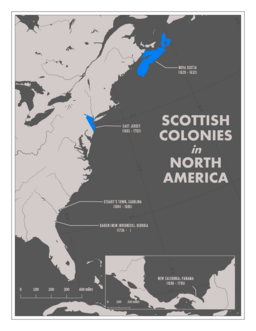What is in a Name
 "What’s in a name, a rose by any other name, a rose is a rose;" pick your cliché, but in the case of MacNeil or McNeill there is more than a wee bit of difference and it may be comparing a rose to a carnation. While there are a great number of variations, the two most common spellings are MacNeil and McNeill and while not always true, the spelling does tend to give away quite a bit of information about what branch of the clan someone came from, where their ancestors lived in Scotland and where their ancestors immigrated and even to some extent when their ancestors immigrated.
"What’s in a name, a rose by any other name, a rose is a rose;" pick your cliché, but in the case of MacNeil or McNeill there is more than a wee bit of difference and it may be comparing a rose to a carnation. While there are a great number of variations, the two most common spellings are MacNeil and McNeill and while not always true, the spelling does tend to give away quite a bit of information about what branch of the clan someone came from, where their ancestors lived in Scotland and where their ancestors immigrated and even to some extent when their ancestors immigrated.
Where does the name Neil come from? We may never know for sure, but legend holds that both branches are descendants from King Nail of the nine hostages, a King of Ireland sometime between the 4th to the mid-6th century. On the surface it makes sense given the proximity of Ireland to both Barra and Kintyre Scotland.
Generally, people with the surname McNeill have roots in the Colonsay/Gigha branch of the clan. This variation of the spelling is traced back to the McNeills that controlled Castle Sween in Knapdale in Argyll for the Lord of the Isles. People with the surname MacNeil had ancestors that inhabited the Outer Hebrides, most notably the island of Barra. This spelling of the name traces back through keepers of Kisimul Castle on Barra. Legend has MacNeils there from the 11th century.
Does the following hold true for every MacNeil or McNeill? Of course not, but it is a start and does hold true for a great deal of each spelling group, and it is a start. Add to this the time frame that your ancestors left Scotland and you get closer to which branch your ancestors came from.
The first real immigration of Scots to the new world occurred in 1 739 and was said to be led by Neil McNeill who lived on the island of Gigha. There were 350 in this group. Several of this group were members of his extended family with the surname McNeill. Once these Scottish families established themselves just north of present day Fayetteville North Carolina, they were quite active in convincing their kinsmen to follow them over. There were successive waves of Scots from the Argyll region right up just prior to the Revolution. You can be assured there were McNeills in each wave. So, if your ancestors came before 1770 or so and landed in North or South Carolina, then it is a good bet your ancestors are Colonsay/Gigha McNeills. Later immigrations went to New Zealand and Australia, being a safer bet than going to the American colonies at war. After the American Revolution, several more waves of Scots from Colonsay and the Kintyre region went to America, unfortunately sometimes by force. North Carolina continued to be their favorite destination. These McNeills spread though out the Southeast US.
739 and was said to be led by Neil McNeill who lived on the island of Gigha. There were 350 in this group. Several of this group were members of his extended family with the surname McNeill. Once these Scottish families established themselves just north of present day Fayetteville North Carolina, they were quite active in convincing their kinsmen to follow them over. There were successive waves of Scots from the Argyll region right up just prior to the Revolution. You can be assured there were McNeills in each wave. So, if your ancestors came before 1770 or so and landed in North or South Carolina, then it is a good bet your ancestors are Colonsay/Gigha McNeills. Later immigrations went to New Zealand and Australia, being a safer bet than going to the American colonies at war. After the American Revolution, several more waves of Scots from Colonsay and the Kintyre region went to America, unfortunately sometimes by force. North Carolina continued to be their favorite destination. These McNeills spread though out the Southeast US.
Where does this leave the Barra MacNeils? Maybe Shakespeare had it wrong, there is a “a story of more woe than this of Juliet and her Romeo.” In 1838 Roderick MacNeil, head of the Barra MacNeils, who had squandered the family fortune, sold the island to Colonel Gordon of Cluny. Colonel Gordon was a tailor-made villain. In addition to Barra he bought several other islands in the Hebrides, which he forcibly cleared of the natives. In 1851, Gordon tricked 1500 inhabitants of Barra (a high number of which were MacNiel families) to show up for a meeting, where legend has it, they were overpowered, put aboard waiting ships and sent to Nova Scotia and Quebec. Many had only the clothes on their back and almost nothing in the way of money. The few that failed to show for the “meeting”, found their home burned and were removed on later ships. Some “passengers” were even put in irons. Contemporary reports in Quebec describe the new arrivals chances of surviving the winter as “grim.” Grim as it was, survive they did and went on to populate Canada and the Northern US all the way to the west coast. So, if your ancestors came through Canada mainly Nova Scotia and Quebec, around 1850’s chances are they are Barra McNeils.
What is in a name? In our case a lot of rich history of some very brave people who overcame some very great obstacles. We their descendants should be proud.
Needham Bass




